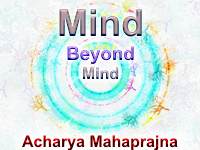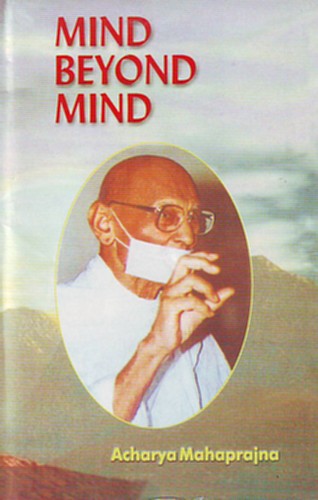
We often talk of Brahmacarya or celibacy. The human body has a powerhouse in it. It is situated in the form of a cavity at the lower end of the spinal cord in the rear part of the body. It generates electricity in the body. When carried upwards in the body it produces enormous strength of resolution. When the Prana force begins to flow downwards, due to the passions, it weakens the will, overshadows consciousness, makes the mind wavering and destroys the will. The result is all round failure. Celibacy, speech control, discipline of the mind and concentration are made possible by the upward flow of the Prana force. All these are the implements with which we can reach a spiritual state of our being. Sadhana is not wishful thinking. The hunter has to be resolute as well as concentrated. In shooting competitions only that competitor will win who has these qualities in him. During the Second World War Winston Churchill kept the letter V as a symbol of victory before his soldiers. This letter symbolized the resolution to win the war. Resolution, courage, and concentration are mental and not spiritual attitudes. They are the means of attaining spiritual ends. They may be used as the means of attaining non-spiritual ends also. It depends upon us to utilize them for particular purposes.
Japa is also a means. It is an application of the Prana force. A proper combination of the Mantra and the mind creates a spiritual force for both words and ideas produce vibrations of electric currents. These currents produce wonderful effects.
Colour, words, mind, and the pronunciation of words are the four factors, which constitute Japa. Colour is closely connected with our mind and life. It influences our bodies also. Colour therapy is now an established practice. There is another therapy known as the cosmic ray therapy. This too is connected with colour. It utilises electric light which his numerous effects on the body and the mind and provides treatment for various kinds of mental and physical diseases. The body has various colours, which are responsible for producing different kinds of diseases. They also serve as the mediums of curing diseases. The deficiency of a particular colour in the body produces particular kinds of disease and its replenishment cures us of the disease.
Colours are also associated with our thought processes. Thought processes are atomic processes. Black atoms produce effects unfavourable to the mind. Yellow atoms produce favourable effects. Lesya (coloration) for example, is composed of black atoms. Thoughts are composed of red and white atoms also. They produce Padma Lesya and Tejo Lesya respectively.
The body is also closely associated with colours. Every living body produces a glow or aura around itself which has several colours, red, white, blue, black etc. We cannot see this aura with the bare eye. It affects ourselves as well as others. The effect of personality is the effect of the coloured aura around the person we come in contact with. Different kinds of bodies produce different kinds of effects through the auras around their bodies. These effects are favourable as well as unfavourable. Different moods are produced in us when we come in contact with different persons. They are produced by the auras of the bodies of the persons contacted by us. White, blue and yellow auras produce peace and happiness. Black aura produces sadness and emotional disturbances like jealousy etc.
Sound is another factor, which influences us immensely. It affects the mind also. We are very well familiar with the gross effects of sound. Somebody told Swami Vivekananda that words are meaningless sounds. After a little silence the Swami called the man a fool. The word fool enraged the man and he asked the Swami as to why the latter had used abusive language. The Swami replied, ‘It is you who had said that words had no meaning. Why do you then feel offended when I call you a fool?’ Words have a power and it creates effects. The effects are sometimes very subtle. Sound therapy has now come to be recognised as an effective system of treating diseases. Surgical operations are done with the help of sound waves. The recitation of Mantras is still more wonderful in its effects.
There are six ways of pronouncing words: the short, the medium, the long, the subtle, the medium subtle, and the extremely subtle pronunciations. A short-breath pronunciation of a Mantra destroys the effects of (s….?) a long-breath pronunciation produces prosperity and arranges a marriage and a medium-breath pronunciation increases knowledge. The remaining three kinds of pronunciations help in the attainment of an ideal. Thus these six kinds of pronunciations produce different kinds of effects.
The next important factor is the mind. It has to absorb the Mantra in order to produce the force inherent in Japa. Japa does not mean a mere recital or the telling of beads. The manner in which it is to be recited is important. Much more important is the purpose with which it is recited. Ignorance of the import of a Mantra and its wrong recitation render it ineffective.
The purpose of Japa is to get absorbed into the ideal. Patanjali defined Yoga as the control of the mental processes. It is the Citta or mind, which meditates. Jain Acaryas classified meditation into body-meditation, word-meditation, and mind-meditation. It is a highly original classification, which laid the foundation of a new tradition in Yoga. Body-meditation is constituted by a complete immobilization of the body. Word-meditation consists in a complete absorption of the word in the mind. Mind-meditation is a complete identification of the mind and the meditation object. Japa is word-meditation. It is performed with the medium of words.
The recitation of Namo Arihantanam cannot be effective unless the image of the Arhat has been completely absorbed by the mind of the reticent. He has to identify himself with the Arhat. Of course, a mechanical recitation also produces some effect on the Prana force through the sound waves produced by the recitation. But we should not be led astray by the temporary side effects and give up the process of Japa. The ultimate aim of Japa is self-realization. There is no short cut in Japa. The journey is long and it has to be completed with exertion.
Japa without the proper mood remains ineffective. The recitation of the Mantra ‘Arhat’ should produce in us the mood in which we begin to feel that we ourselves are the Arhats. We should develop the requisite resolution to become the Arhat. If the recitation is done with this mood or frame of mind, the sound waves produced by the recitation will fix the image of Arhat in the mind and will bring about a spiritual transformation in us. This will result in a successful reduction of attachments and aversions and the strengthening of the sublime emotions. That is the way to the attainment of the self.
 Acharya Mahaprajna
Acharya Mahaprajna

